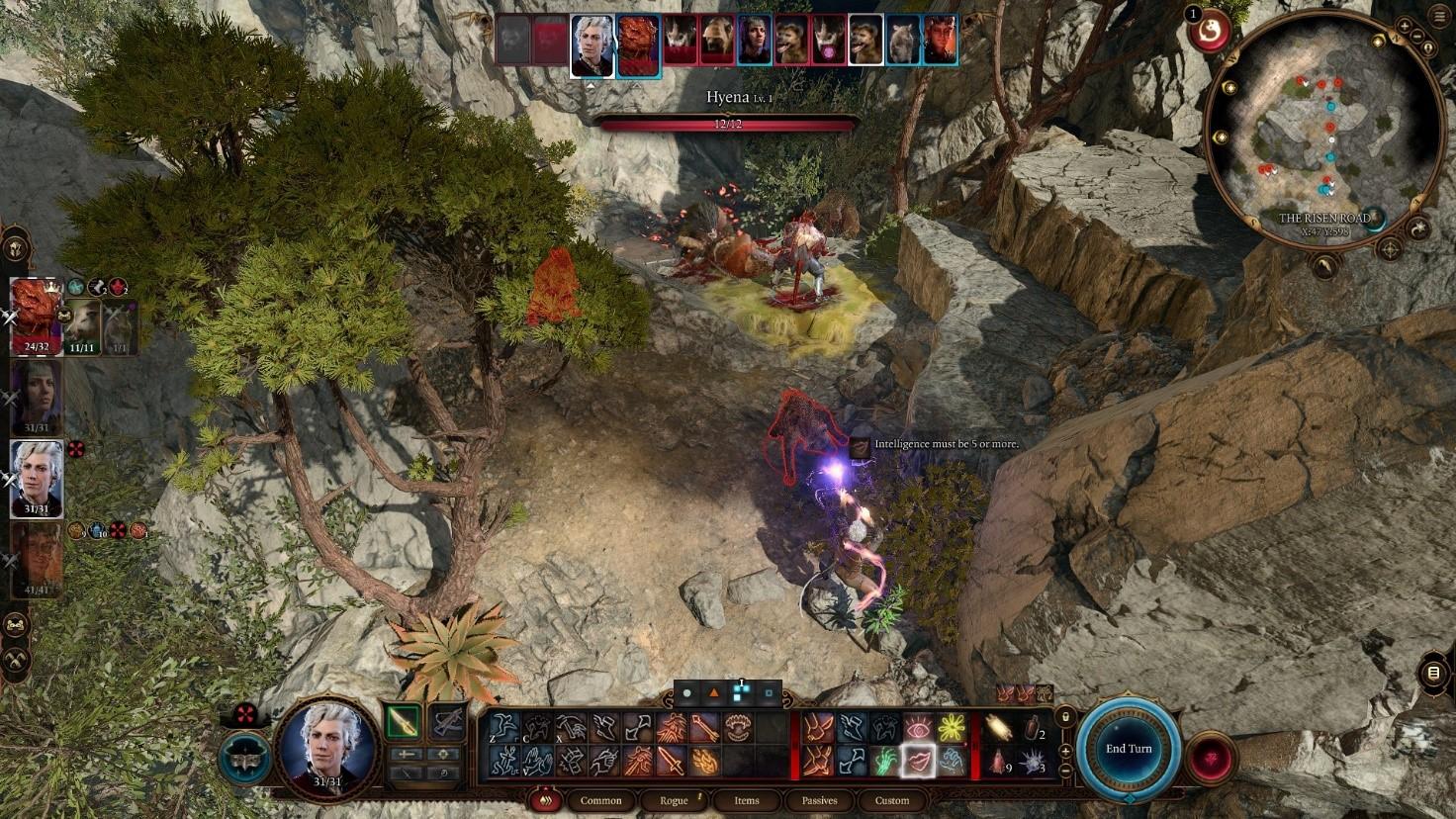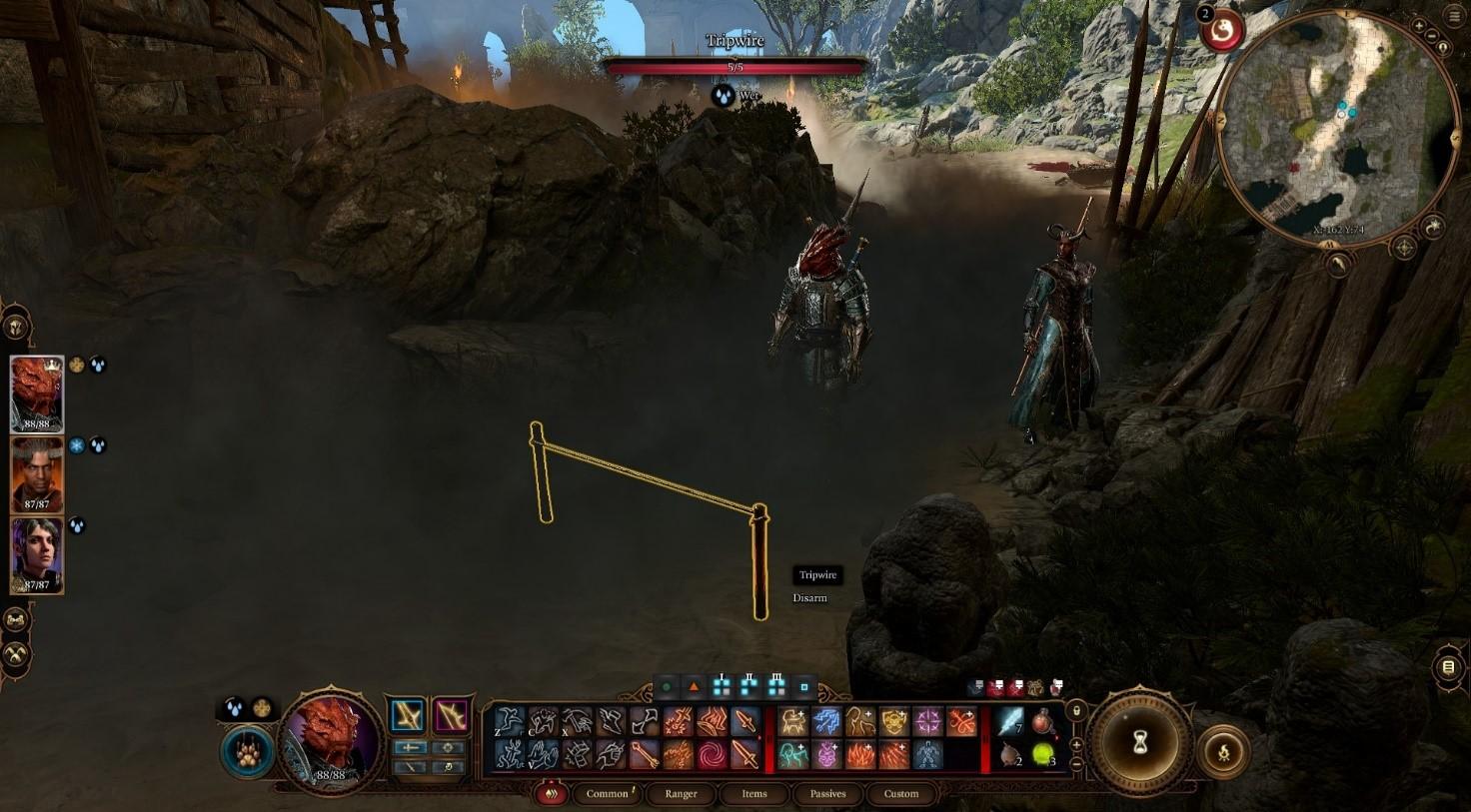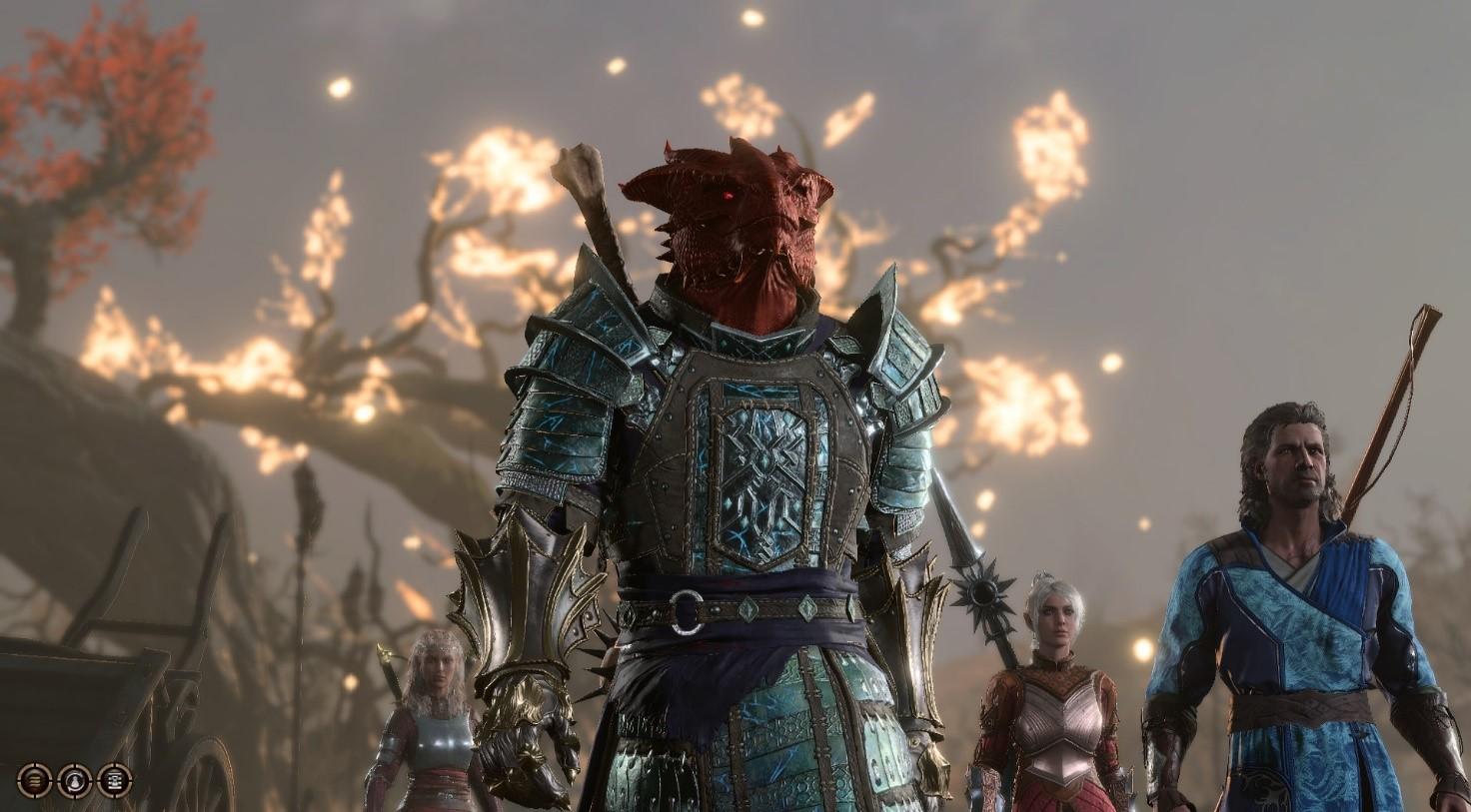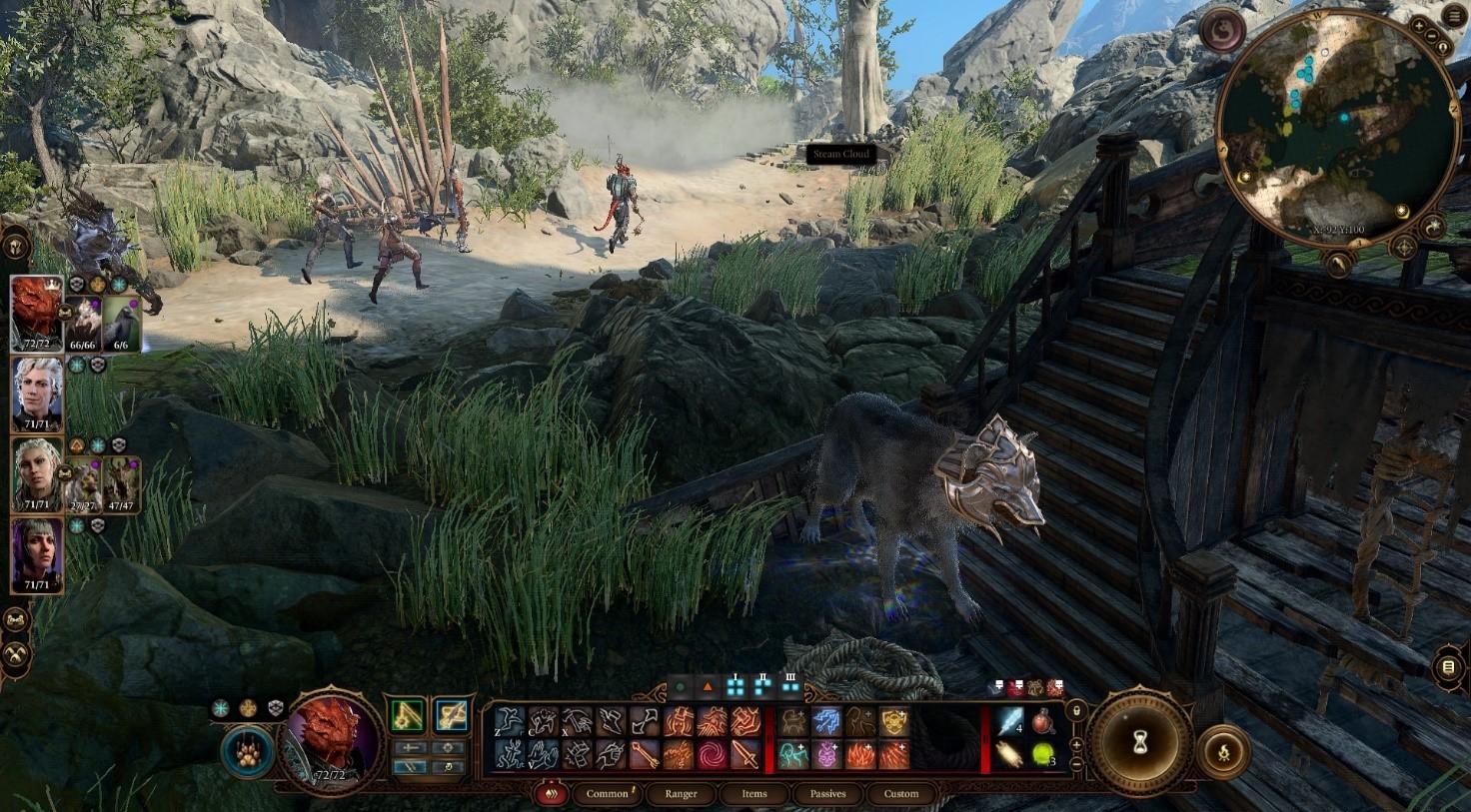
A Late Look: Baldur’s Gate III

by
Mark Nielsen
, posted 1 day ago / 2,148 Views
Welcome to A Late Look, a series of article where I take a belated look at games from yesteryear that I missed out on the first time around. Not quite review and not quite rant, it’s more a casual assessment of what I – the gamer of the future – consider to be each game’s strengths and weaknesses in retrospect.
This time we don’t have to look as far back in the rear-view mirror as usual, as we’re taking a glance at one of last year’s titles: Baldur’s Gate III. Despite being an occasional enjoyer of tabletop DnD, there’s generally little love lost between me and its video game counterparts, including the original Baldur’s Gate games. That’s for a long list of reasons I won’t bore you with here, but with more than two decades and a switch in developer setting them apart, it was obvious that Baldur’s Gate III would be a different beast entirely – one that I decided to give the benefit of the doubt to and try out for myself, given its rather favorable reception. It’s worth noting that this late look is based only on the single-player experience.
Strength: The Combat System

Let’s start with the area where Baldur’s Gate III sets itself apart most obviously from its predecessors and also has improved manyfold: the combat system. When you get down to the dirty details, DnD is a rather complex game (read: convoluted), and one that relies pretty heavily on luck, both of which are passable enough in a tabletop setting where you only have your own slow leveling character to keep track of and the social setting can make your lackluster dice rolls as funny as they are frustrating. When you translate such things to video games you generally lose those advantages, but Baldur’s Gate III does its best to make up for that; the rules are made as digestible as possible, through good use of UI and (usually) being able to see your move’s chance of success ahead of time (which makes the random elements a bit more strategic and a bit less ‘shut your eyes and pray’).
But that’s just the mechanics, the real joy of the combat comes from the abilities themselves and the ways in which the stars sometimes align to let you pull off unlikely moves that are deadly efficient or just plain fun. It shouldn’t be underestimated how much enjoyment can be had from hitting half a dozen enemies in one turn by running around with your Spirit Guardian, or leaping halfway across the continent to crush your enemies with the weight of an Owlbear. It’s certainly still not a perfect system: it suffers from being a bit busy, with perhaps twice as many buttons as you’d ever consider using, and it sometimes feels like the developers take great pride in punishing miss clicks. Still, overall it’s great as far as turn-based combat goes, so much so that I found myself frustrated early on with how little I got to fight, since I always stumbled into a peaceful solution.
Weakness: It’s A Trap!

Traps are tricky as a game mechanic, because they aren’t fun to walk into and they aren’t necessarily fun to avoid either, with Baldur’s Gate III being a prime example of both. While many things in Baldur’s Gate III depend on a proficiency check (a dice roll related to a specific skill), traps are related to not one, but two: a Perception check highlights the trap (sometimes a requirement for disarming it) and then a Sleight of Hand check does the actual disarming. Already we’ve got two options for failure instead of one, but we’ve barely gotten started, because unlike lockpick disarming these can’t be retried if you have multiple tools, and unlike most other proficiency checks in both video games and real life, the trap explodes if you fail, meaning you might as well have walked into it and saved some time. Add to this the fact that a trap never comes alone (they usually hunt in packs by the dozen) and suddenly it’s the player that has to pass a Patience and Quick Save check to get through another orange-lit corridor.
The end result was that I did in fact choose to walk through the traps Leeroy Jenkins style to save time in the later parts of the game, because that simply beat having to deal with them. Perhaps if the developers had made all traps disarmable without the perception check element being a requirement, and reduced their number by a solid 80%, they might have found a point where traps would be something to watch out for without simply being a ball and chain to the player that stutters the experience, but as they are now I can only describe them as a detriment to the game.
Strength: Companions

It’s dangerous to go alone, but in Baldur’s Gate III you don’t have to as you’ll come across companions from the very beginning that will stick with you to the bitter end – if you let them. Both for the storytelling and game itself the companions are one of the most essential parts of the experience, from the long conversations in camp to having somebody to help deal with the exponential arms race between Rogues and locks. And, luckily, they’re an interesting and (mostly) likeable bunch that all have strong personalities and stories of their own, some of which are as compelling as the main story, if not more so. Being able to switch between and control each character is also welcome, though it can become a bit awkward if you accidentally start a conversation as somebody other than intended. The only real problem with the companion system is only being able to switch party members at camp, which can lead to a lot of wasted time, particularly in the late game, but it’s still worth it to vary your lineup and see each character’s quest through to the end (except Lae’zel, don’t care for Lae’zel).
Weakness: All of the Bugs

When Baldur’s Gate III released in August of last year one of the weirder praises sung by critics and players alike was that the game felt actually complete upon release, lo and behold! It’s a sad state of affairs when that starts being regarded as an exception rather than the rule, but sadder still is that my experience with the game a year later has been frankly quite the opposite, with issues aplenty to choose from; a few perhaps due to awkward design, but just as many straight up bugs. Pets that get stuck on invisible blockades every time you turn a corner, characters that suddenly stop taking input until you reload, loading issues and crashes, and dozens of conversations with the back of my shoulder due to awkward camera angles.
Choosing a screenshot for this subsection was honestly a real challenge because I have a whole slideshow worth of issues to showcase and, while a few of them are admittedly just good fun, all in all the issues are both too many and too frequent, giving a lot of bumps along the ride. So, in contrast with the discourse of a year ago, while I wouldn’t exactly go so far as to call the game incomplete, I can honestly say my experience with it felt like a rough version 1.0, and that’s a year after release mind you. Baldur’s Gate III is a noteworthy game in many areas – its ambition and sense of spectacle for starters – but, at least based on my adventure, polish is not one of them.
Strength: My Dragonborn Ranger
At the end of the day the greatest strength of this DnD epic would, of course, be its iconic protagonist: the Dragonborn Ranger, Heinz Tomates Ketchp – tomato farmer by trade and adventurer by choice. And with the rich character creator every player can create an (almost as) iconic character for themselves and slip into that role, whether it’s hero, villain, or agent of chaos. Because if there’s one thing Baldur’s Gate III doesn’t lack it’s choices, from character customization, to how you approach each individual quest, and the larger story decisions that shape your adventure. There’s nothing stopping you from being an ass to everyone, or a modest hero on the surface that suddenly decides ultimate power doesn’t sound so bad in the end. It can almost be a bit overwhelming to be honest, but if you ever find yourself in doubt you need only ask: what would Heinz Tomates Ketchp do?
Conclusion
With a game this big there’s of course much more that could be mentioned: the stellar visuals, the underwhelming tadpole tech tree, the fact that every party member wants to sleep with you, or that you can’t use Hideous Laughter on hyenas (attention to detail my ass), but we’d better leave it here so that this “Look” doesn’t turn into a dissertation.
Baldur’s Gate III is a modernized classic RPG and it does a damn good job at that, though it still comes with some of the pitfalls of the genre… and frankly one too many bugs. It’s also a lengthy game, extremely so, and there were certainly parts along the way where I felt like it dragged on. It’s safe to say it tested my patience in more ways than one, but it also had me greatly hooked at times, and when the curtain was drawn in the end it was on a positive note. I can’t say it entirely lived up to its more than ample reputation, but it’s a game that aims high and delivers a massive experience, with all the good and bad that entails, and I suspect the good parts will stick with me much longer.
Personal Verdict: A roll of 17 out of 20
Leave Your Comment